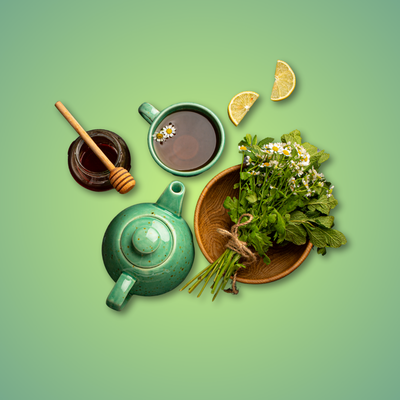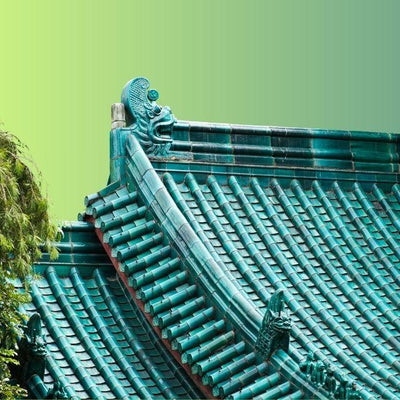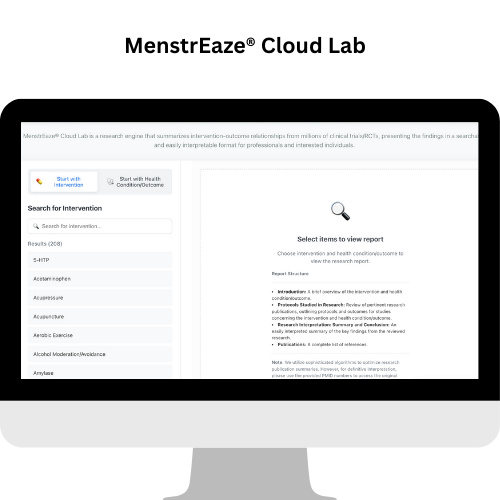The world of natural health solutions is constantly evolving, yet certain time-honored remedies continue to capture our attention. Among these, tea stands out as a beloved ritual, offering not just hydration and warmth but also a potential gateway to enhanced well-being. Ginseng tea, a beverage steeped in history and tradition, is gaining increasing popularity for its purported health-boosting properties. This guide will delve into the fascinating world of ginseng tea, exploring the different types of ginseng used, the potential benefits it offers, how to prepare it properly, its rich history, the nuances of its flavor, and where you can find high-quality options.
The Ginseng Family: Exploring the Key Types for Tea
The term "ginseng" broadly refers to plants in the genus Panax, with two primary types being most commonly used for tea: Asian ginseng and American ginseng [1]. Understanding the distinctions between these two is key to appreciating the unique qualities each offers.
Panax Ginseng (Asian Ginseng): The Energizing Root
Often hailed as the original and "true ginseng," Panax ginseng has a long and storied history, particularly in East Asian cultures [3]. Also known as Chinese ginseng, Korean ginseng, or Oriental ginseng, this plant is native to the Far East, thriving in regions like Korea, northeastern China, and far-eastern Siberia [4]. The root of Panax ginseng is prized for its rich concentration of compounds called ginsenosides [3]. These complex molecules are believed to be the primary drivers behind the many health benefits associated with Asian ginseng, acting as antioxidants and potentially possessing anti-inflammatory properties [1]. Different types of ginsenosides exist and may contribute to the diverse effects of ginseng [6].
Within the realm of Asian ginseng, two main forms are prevalent: Korean Red Ginseng and White Ginseng [4]. Korean Red Ginseng is produced by steaming the unpeeled ginseng root before drying [4]. This steaming process is thought to alter the root's chemical composition, potentially enhancing certain properties or creating unique compounds not found in other forms [6]. For instance, specific ginsenosides like Rh2, Rs4, and Rg3 are unique to red ginseng due to this heat processing [6]. Traditionally, in Korea, red ginseng has even been prescribed to improve sexual desire and arousal [1].
In contrast, White Ginseng is made from the dried, peeled root [4]. The difference in processing – steaming versus simply drying and peeling – is a key factor that might influence the perceived energetic properties of each type. While both originate from the same plant species, the distinct preparation methods suggest that they may offer subtly different benefits or have varying intensities in their effects.
Panax Quinquefolius (American Ginseng): The Calming Cousin
The second major type of ginseng used for tea is Panax quinquefolius, commonly known as American ginseng [1]. As its name suggests, this variety is cultivated in North America, primarily in the USA and Canada [3]. American ginseng has a distinct aromatic profile and grows naturally in deciduous forests [1]. Similar to its Asian counterpart, American ginseng is also highly valued for its medicinal properties [1]. However, a key difference lies in its traditional use and perceived effects. In traditional Chinese medicine, American ginseng is considered less stimulating than Asian ginseng [8], often described as being more "yin" or calming in nature [9]. This difference in the perceived energetic profile is a fundamental distinction that can help individuals choose the type of ginseng tea that best suits their needs.
Other Herbs Sometimes Called Ginseng (and Why They Aren't the Same)
It's important to note that the term "ginseng" is sometimes used to refer to other herbs like Siberian ginseng (Eleutherococcus senticosus) and Indian ginseng (Ashwagandha, Withania somnifera) [2]. While these herbs may share some similar traditional uses, such as stress relief and energy boosting [1], they belong to different plant families and do not contain the same active ingredients as true ginseng (Panax species) [2]. For example, Siberian ginseng contains compounds called eleutherosides, while Ashwagandha is rich in alkaloids, lactones, and saponins [3]. Therefore, to experience the benefits specifically associated with ginsenosides, it's crucial to choose tea made from either Panax ginseng or Panax quinquefolius.
|
Feature |
Asian Ginseng (Panax Ginseng) |
American Ginseng (Panax Quinquefolius) |
|
Other Names |
Chinese Ginseng, Korean Ginseng, Oriental Ginseng |
American Ginseng |
|
Origin |
Far East (Korea, NE China, Siberia) |
USA and Canada |
|
Traditional Chinese Medicine (TCM) Energy |
More Yang (Energizing) |
More Yin (Calming) |
|
Stimulating Effect |
Generally more stimulating |
Considered less stimulating |
|
Flavor Profile |
Often more pronounced, earthy, bitter |
Milder, sometimes sweeter, can be bitter |
|
Primary Active Compounds |
Ginsenosides (may have higher concentration) |
Ginsenosides (different profile) |
|
Potential Benefits |
Energy, cognitive function, immune boost, heart health, may lower blood sugar (inconsistent), may improve erectile dysfunction |
Energy (especially for cancer-related fatigue), cognitive function (working memory), immune boost, stress reduction, may lower blood sugar, anti-inflammatory |
Unlocking the Potential: Health Benefits of Ginseng Tea
Ginseng tea has been traditionally used for a wide array of health purposes, and modern research is beginning to shed light on some of these purported benefits.
Boosting Energy Levels and Combating Fatigue
Both Asian and American ginseng are recognized for their potential to enhance energy levels [10]. Asian ginseng, in particular, is believed to invigorate the body by increasing "yang" energy, thus boosting physical stamina and vitality [9]. Korean ginseng, a type of Asian ginseng, is also well-known for its ability to combat fatigue and enhance energy [11]. Interestingly, American ginseng has shown promise in helping with fatigue associated with specific conditions like cancer, as supported by a 2021 review [9]. The tea itself, regardless of the ginseng type, is rich in antioxidants and may contribute to increased energy levels and reduced mental and physical fatigue [11]. Studies have indicated that consuming ginseng can lead to less fatigue compared to a placebo [11].
Enhancing Cognitive Function, Memory, and Focus
Ginseng tea may also offer benefits for cognitive function. Research suggests that Asian ginseng can slightly improve thinking and learning abilities, potentially enhancing mental arithmetic, concentration, and memory [4]. Some studies have even found a positive effect when Asian ginseng is combined with Ginkgo biloba for mental performance [4]. American ginseng, on the other hand, has been shown to significantly improve working memory in some studies [7]. Furthermore, regular, long-term consumption of ginseng has been linked to improved cognitive function in older adults [7]. These cognitive benefits are likely attributed to the ginsenosides present in ginseng, which may have neuroprotective effects by reducing oxidative stress, a factor known to impair cognitive function [10]. It appears that different types of ginsenosides in American and Asian ginseng might even lead to distinct effects on memory [15].
Strengthening the Immune System and Fighting Off Illness
A well-recognized benefit of ginseng tea is its potential to bolster the immune system [14]. Asian ginseng is considered to have a stronger immune-enhancing effect compared to American ginseng [9]. Studies have shown that Asian ginseng can increase the number of immune cells in the blood and improve the body's response to flu vaccines [4]. Ginseng, in general, possesses antibacterial, antifungal, and antiviral properties, which may contribute to its ability to fight off illness [7]. Korean red ginseng has been found to increase levels of immune cells in the body [7]. Moreover, both Asian and American ginseng may reduce the risk of catching a cold or the flu and can potentially lessen the severity and duration of symptoms if illness occurs [2]. Ginsenosides, the active compounds in ginseng, are believed to play a crucial role in enhancing immune function by influencing immune cells like dendritic cells and affecting the production of cytokines [6].
Reducing Stress and Promoting a Sense of Calm
Ginseng has a long history of use for stress relief [1]. American ginseng, with its "yin" properties, is often associated with promoting a sense of calm [9]. Research suggests that ginseng may help ease stress and could offer benefits for conditions like depression and anxiety [7]. As an adaptogen, ginseng is thought to help the body adapt to various stressors by regulating the levels of stress hormones [4]. This adaptogenic effect is believed to occur through the influence of ginseng on the hypothalamic-pituitary-adrenal (HPA) axis, a key system involved in the body's stress response [18]. Active compounds found in both American and Indian ginseng have demonstrated this ability to modify the body's reaction to stress [21].
Other Potential Benefits
Beyond these primary benefits, ginseng tea may offer a range of other health advantages. Its anti-inflammatory properties, largely attributed to ginsenosides, may help in managing inflammatory conditions and reducing muscle damage from exercise [1]. Both Asian and American ginseng have been shown to potentially lower blood sugar levels, although some studies indicate that Asian ginseng might, in some cases, raise blood sugar [2]. Ginseng may also improve erectile dysfunction by promoting blood circulation, although research findings have been mixed [7]. Furthermore, there is ongoing research into the potential benefits of ginseng against cancer, with some studies suggesting that ginsenosides may help prevent abnormal cell growth [2]. Asian ginseng, in particular, may contribute to improved heart health and circulation and could help lower bad cholesterol levels [4]. From a traditional Chinese medicine perspective, ginseng is also believed to aid digestion by improving the function of the spleen and stomach [9]. While these additional benefits show promise, it's important to note that research in some of these areas is still ongoing, and findings may vary.
Important Considerations: Side Effects, Contraindications, and Interactions
While ginseng tea offers potential health benefits, it's crucial to be aware of potential side effects, contraindications, and interactions with medications.
Potential Side Effects
The most commonly reported side effect of ginseng tea is difficulty sleeping or insomnia [2]. This is often attributed to its stimulant properties [26]. Other less frequent side effects can include headache, agitation, upset stomach, menstrual problems, breast pain, dizziness, nervousness, anxiety, euphoria, diarrhea, vomiting, nosebleed, and increased blood pressure [2]. Some individuals might also experience decreased concentration [26]. In rare cases, more severe side effects such as severe rash, liver damage, and serious allergic reactions have been reported [5]. Ginseng may also have an estrogen-like effect, which could lead to breast tenderness or soreness and, in postmenopausal women, uterine bleeding [26]. Given the potential for insomnia, it is generally advisable to avoid consuming ginseng tea close to bedtime. Furthermore, individuals who are sensitive to stimulants should be mindful of the potential for increased nervousness or anxiety.
Contraindications (When to Avoid Ginseng Tea)
Certain individuals should exercise caution or avoid ginseng tea altogether. It is not recommended for pregnant or breastfeeding women due to potential harm to the fetus or infant and its estrogen-like effects [2]. Ginseng should also not be given to infants and children as it may be harmful [5]. People with high blood pressure should consult their doctor before using ginseng tea, as it may potentially increase blood pressure [2]. Individuals with diabetes should also be cautious due to the potential for ginseng to lower blood sugar levels, requiring close monitoring [2]. Those with autoimmune disorders should consult their doctor as ginseng might worsen their condition by stimulating the immune system [4]. Due to its potential blood-thinning effects, ginseng tea should be avoided by individuals with bleeding or clotting problems [2]. People with heart disorders, including abnormal heart rhythms, should also seek medical advice before consuming ginseng tea [17]. It is contraindicated for individuals with schizophrenia or bipolar disorder as it may increase the risk of mania [2]. Women with hormone-sensitive conditions, such as a history of breast cancer, should avoid ginseng due to its estrogen-like effects [2]. Finally, it is generally recommended to stop taking ginseng at least seven days prior to any scheduled surgery due to its potential effects on blood sugar and blood clotting [2]. Given the range of these contraindications, seeking professional medical advice before regular consumption is strongly recommended, especially for those with pre-existing health conditions.
Possible Interactions with Medications
Ginseng tea can interact with various medications, potentially altering their effectiveness or increasing the risk of side effects. Individuals taking blood-thinning medications like warfarin, aspirin, or clopidogrel should be particularly cautious as ginseng can further slow blood clotting, increasing the risk of bleeding [2]. It can also interact with diabetes medications such as insulin and oral hypoglycemic agents, potentially causing blood sugar levels to drop too low [2]. Combining ginseng tea with stimulants, including caffeine, pseudoephedrine, and medications for ADHD, may intensify side effects like nervousness, sleeplessness, and increased heart rate and blood pressure [2]. It can also interact with MAOIs, a type of antidepressant, potentially increasing the risk of side effects such as anxiety, headache, restlessness, and mania [2]. Other potential interactions include those with ACE inhibitors and calcium channel blockers used for blood pressure, diuretics like furosemide, immunosuppressants, morphine, digoxin, and estrogen therapy [4]. Ginseng may also affect medications that are processed by the liver [22]. Due to this extensive list of potential drug interactions, it is essential to inform healthcare providers about ginseng tea consumption, especially if you are taking any prescription or over-the-counter medications.
The Art of Brewing: Preparing the Perfect Cup of Ginseng Tea
Preparing ginseng tea can be a simple and rewarding process. The method varies slightly depending on whether you are using whole root, slices, tea bags, or powder.
Methods Based on Form
If using whole ginseng root or slices, it's best to first rinse the root thoroughly to remove any dirt [29]. For whole roots, slicing them thinly will increase the surface area for better extraction [30]. Place the root or slices in a pot with water and simmer for 20 to 30 minutes [29]. Some suggest shorter simmering times of 4 to 5 minutes for slices may also be sufficient [32]. The ginseng root can often be reused for multiple cups of tea [33], and some people even eat the softened root after brewing [33]. For ginseng tea bags, simply pour about 8 fluid ounces of boiling water over the tea bag in a cup [34]. Cover the cup and allow the tea to steep for 3 to 5 minutes [31]. Some green tea blends containing ginseng may recommend a shorter steeping time of 1 to 3 minutes [36]. If you are using ginseng powder, dissolve about 1 teaspoon in hot water [3]. Some prefer to place the powder in a disposable tea bag before adding hot water [42].
Recommended Water Temperature
For optimal extraction of the beneficial ginsenosides from the ginseng root, it is generally recommended to use very hot but not boiling water, around 200-208°F (93-98°C) [35]. If using boiling water, it's advisable to let it cool slightly for about 30-60 seconds before pouring it over the ginseng [40]. However, if you are brewing a ginseng tea blend that includes green tea, slightly cooler water may be preferable to avoid a bitter taste [38].
Ideal Steeping Time
The ideal steeping time for ginseng tea varies depending on the form of ginseng used. For roots or slices, allow for a steeping time of 5 to 15 minutes or even longer, depending on how strong you prefer your tea [31]. Some traditional recipes suggest simmering the root for as long as 30 minutes to an hour for a more robust flavor [3]. For tea bags, a steeping time of 1 to 5 minutes is generally sufficient [30], with some green tea blends recommending just 2 minutes [38]. If using ginseng powder, steeping for about 5 minutes is usually adequate [46].
Tips for Enhancing Taste
Ginseng tea can sometimes have a bitter or earthy taste, which some people find less appealing on its own. To enhance the flavor, consider adding honey, lemon, or ginger, which are common additions that can provide sweetness and extra flavor [11]. Traditional Korean ginseng tea often includes jujubes and dried Korean chestnuts, which add a natural sweetness and nutty flavor [28]. You can also sprinkle pine nuts on top for an added touch [28]. Ginseng blends well with other teas and herbs like licorice, ginger, lemon, oolong, and green tea, offering a variety of flavor profiles to explore [46]. Given the variations in brewing recommendations based on the form of ginseng and whether it's a pure ginseng tea or a blend, it's always a good idea to follow any specific instructions provided with the product. Experimenting with steeping times and additions can help you discover your perfect cup of ginseng tea.
A Sip Through History: The Origins and Traditional Uses of Ginseng Tea
The history of ginseng tea is deeply intertwined with ancient East Asian cultures, where it has been revered for centuries for its health-promoting properties.
Historical Significance in East Asia
Ginseng was highly sought after in ancient China, Korea, and Japan [9]. In ancient China, during the Warring States period (475–221 BC), the preparation of ginseng tea was associated with good health and high social status [28]. Its significance continued through the Ming Dynasty (1368-1644), when Korean ginseng tea was documented by Li Shizen in his renowned "Great Compendium of Herbs" [28]. In Korea, ginseng roots have been used for over 2,000 years and ginseng tea, known as "insam-cha," remains a traditional beverage [28]. Even historical figures like King Yeongju of the Joseon Dynasty in Korea consumed ginseng-infused tea to maintain his health [28]. Ginseng was so highly regarded in ancient China that it was considered a "herb for everything" and believed to possess mysterious powers [50]. This long and esteemed history underscores the deep-rooted belief in the health benefits and cultural importance of ginseng tea in East Asia.
Traditional Uses in Traditional Chinese Medicine (TCM) and Other Practices
For thousands of years, ginseng has been a cornerstone of Traditional Chinese Medicine (TCM) [4]. In TCM, it is often combined with other herbs to enhance its effects [4]. Ginseng is considered a powerful tonic, often referred to as the "king of tonic herbs," believed to increase "qi" or vital energy and nourish the body's five vital organs: the spleen, lungs, heart, kidney, and liver [9]. It is also thought to help balance the opposing forces of "yin" and "yang" within the body [9], with Asian ginseng being more "yang" (energizing) and American ginseng more "yin" (calming) [9]. Traditionally, ginseng has been used to address a wide range of ailments, including fatigue, stress, asthma, cancer, and digestive issues [4]. The World Health Organization (WHO) also recognizes the traditional uses of ginseng as a diuretic, digestive aid, tonic, and stimulant when taken orally, as well as for stress resilience [18]. The principles of TCM emphasize a holistic approach to health, and ginseng's role within this framework highlights its value in promoting overall well-being and balance.
The Story of American Ginseng
While Asian ginseng has a long history in the East, American ginseng also has its own unique story. Native to the deciduous forests of North America, it was used by various Native American peoples for its medicinal properties, including treating digestive problems, relieving pain, and addressing respiratory conditions and fevers [1]. The Ojibwe and Muscogee tribes are specifically noted for their traditional uses [53]. The connection between Asian and American ginseng was discovered in the early 18th century when a French Jesuit in Canada, after reading about Asian ginseng, recognized the similarities in the growing environments and subsequently found the North American variety [53]. This discovery led to a booming trade of American ginseng with East Asia [1], which played a significant role in early American international commerce. Interestingly, American ginseng even made a brief appearance in the U.S. Pharmacopoeia in the 19th century as a mild stimulant and digestion aid [53]. The history of American ginseng highlights the global exchange of traditional medicine knowledge and the economic importance of this valuable herb.
Flavor Profile and Variations: What to Expect in Your Cup
The flavor of ginseng tea can be quite distinctive and might vary depending on the type of ginseng used.
Typical Taste
Generally, ginseng tea has a unique, bitter taste accompanied by earthy and warming notes [11]. Some describe the taste as slightly bitter and earthy [29], while others find it pleasantly bittersweet [54]. The earthy flavor can sometimes be quite pronounced, with some even describing it as tasting like "dirt," which is understandable given its root origin [55]. A woody undertone is also often present [55].
Variations Between Types
The flavor profile can differ between Asian and American ginseng. American ginseng is often characterized as having a milder and sometimes sweeter taste compared to the more pronounced flavor of Asian ginseng [56]. However, Wisconsin-grown American ginseng is known for its boldly bitter and aromatic qualities [57]. Asian ginseng, on the other hand, tends to have a more intense flavor and can be quite bitter [56].
Popular Variations and Additions
Due to the inherent bitterness of ginseng tea, it is common to add other ingredients to enhance its flavor and palatability. Honey, lemon, and ginger are popular choices that can add sweetness and complementary flavors [11]. These additions can also contribute their own health benefits [37]. Ginseng is also frequently blended with other types of tea. Ginseng oolong tea combines the floral and toasty notes of oolong tea with the sweet and earthy undertones of ginseng, sometimes offering a balanced and spicy flavor with a hint of licorice [56]. Ginseng green tea is another popular combination, often incorporating lemon and ginger for a refreshing and invigorating drink [1]. Other variations might include blends with rosehips, burdock root, dandelion root, and raspberry mint, resulting in a tangy and sweet infusion [45]. In traditional Korean preparations, jujubes and dried chestnuts are often added to ginseng tea, imparting a natural sweetness and nutty flavor [28]. The wide array of flavor variations demonstrates the versatility of ginseng tea and the many ways to enjoy its potential benefits.
Finding Your Perfect Brew: Where to Buy Reputable Ginseng Tea
With the increasing popularity of ginseng tea, it is available from various sources. However, to ensure you are getting a high-quality product, it's important to choose reputable brands and retailers.
Reputable Brands and Online Retailers
Several well-known brands offer a variety of ginseng teas. Prince of Peace is a popular brand offering both Korean and American ginseng teas in tea bag and instant forms [12]. The Republic of Tea offers honey ginseng green tea and other ginseng blends in tea bags and loose leaf options [36]. Celestial Seasonings is known for its honey lemon ginseng green tea, available in tea bags [38]. For those specifically seeking Korean Red Ginseng, JungKwanJang is a highly regarded brand offering tea in convenient stick packs [66]. Hsu's Ginseng specializes in American ginseng and offers tea bags and roots [63]. If you are interested in Wisconsin-grown American ginseng, Wisconsin Grown Ginseng and Dairyland Ginseng are reputable sources [30]. For unique blends, consider Rishi Tea, which offers an organic ginseng detox blend in loose leaf form [45], or Mountain Tea, which offers ginseng oolong in loose leaf [56]. Adagio Teas also provides ginseng green tea in bulk [26], and Wing Hop Fung offers American ginseng root tea bags [68]. Major online retailers like Amazon and Walmart also carry a wide selection of ginseng tea brands [12].
Tips for Choosing High-Quality Ginseng Tea
When selecting ginseng tea, look for products that clearly specify the type of ginseng used, whether it is Panax ginseng or Panax quinquefolius, and its origin, such as Korean or American. Consider the form that best suits your needs and preferences, whether it's whole root, slices for simmering, convenient tea bags, or instant powder. Opt for reputable brands that are known for their quality and sourcing practices. Reading product descriptions and customer reviews can provide valuable insights into the flavor profile and overall effectiveness of the tea. Be cautious of products that are priced significantly lower than average, as they may contain lower quality ginseng or include fillers. Higher quality ginseng often comes at a premium.
Conclusion
Ginseng tea, with its rich history and diverse potential health benefits, offers a compelling addition to a wellness-focused lifestyle. Whether you choose the energizing qualities of Asian ginseng or the calming properties of American ginseng, understanding the nuances of each type, along with proper preparation methods and potential considerations, is key. As with any natural remedy, it's essential to be mindful of potential side effects, contraindications, and interactions, and consulting with a healthcare professional is always recommended, especially if you have any underlying health conditions or are taking medications. By making informed choices, you can safely explore the potential of ginseng tea and perhaps sip your way to enhanced well-being.









